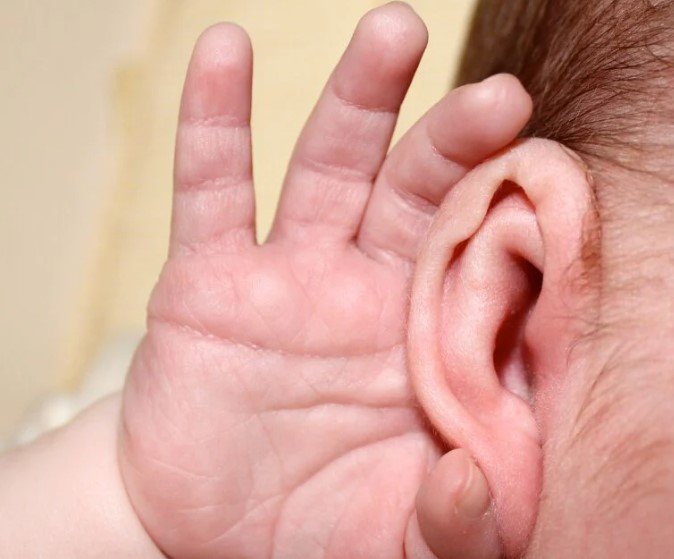A new study out of Montreal shines a spotlight on how vaccines may do more than just prevent disease—they could protect children’s hearing for life.
Childhood hearing loss isn’t always something you see coming. In fact, it often slips under the radar until it’s too late. But a fresh look from researchers at the Université de Montréal’s School of Public Health suggests a surprising twist: common childhood vaccines may be one of our best defenses. Their review, now published in Communications Medicine, connects the dots between vaccine-preventable infections and permanent hearing damage in kids.
It’s a public health issue that doesn’t get enough air time. Yet, over 1.5 billion people globally suffer from hearing loss, and in many cases, the damage starts young. The good news? Much of it may actually be preventable.
Preventing Silence Before It Starts
Let’s talk numbers first. According to the World Health Organization, nearly 60% of hearing loss in children could be avoided with better public health practices.
That’s where vaccines come in. Diseases like rubella, measles, and bacterial meningitis aren’t just nasty fevers or uncomfortable rashes—they’re also major culprits behind irreversible hearing damage.
In low- and middle-income countries, where access to pediatric ear care is already a challenge, this becomes a ticking time bomb. Children get sick, they recover—or so it seems—but the quiet aftermath can last forever.

The Science Behind the Shots
The research team led by Mira Johri dug deep into decades of global scientific data to figure out where vaccines and hearing loss intersect.
Here’s what they found:
-
Congenital rubella, when passed from mother to fetus, often leads to sensorineural hearing loss—permanent, and usually undetectable until speech delays surface.
-
Bacterial meningitis, especially from Haemophilus influenzae type b (Hib) and Streptococcus pneumoniae, frequently leaves survivors with partial or complete deafness.
-
Mumps and measles, though less common in vaccinated populations, still rear their heads in under-immunized regions—and they carry hearing loss risks, too.
By targeting these diseases early with routine immunizations, public health systems might be able to cut childhood hearing impairment dramatically.
A Patchy Shield: Not All Children Are Covered
It’s one thing to prove vaccines can help. It’s another to make sure kids actually get them.
In wealthier countries, rubella and Hib vaccines are standard fare. But in parts of sub-Saharan Africa, South Asia, and rural Latin America, coverage remains uneven.
And then there’s the vaccine skepticism still lingering post-COVID.
One of the study’s authors, Shoghig Téhinian, points out that “missed vaccinations are missed opportunities—not just to avoid disease, but to protect hearing, education, and future livelihoods.”
That ripple effect is worth pausing on. Kids with untreated hearing loss often struggle in school, leading to fewer job opportunities and long-term economic consequences.
Missed Infections, Missed Diagnoses
Hearing loss caused by infections is rarely dramatic. There’s no loud pop or painful ring—just a gradual drift into silence. For parents and teachers, it can look like a child just isn’t paying attention.
Enis Barış from the University of Washington, one of the co-authors, highlighted this subtlety: “By the time hearing loss is diagnosed, the damage is usually done.”
This is especially true in countries with few audiologists or limited newborn screening programs. Without early detection, infections that seem harmless—like a “bad cold” or mild fever—can do their damage quietly.
Where the Research Goes from Here
The authors aren’t claiming vaccines are the single solution. But they argue they’re a critically underused tool in the fight against childhood deafness.
The team recommends that hearing loss prevention be integrated into existing vaccination campaigns and maternal health programs, especially in places where audiological care is scarce. That means broader access to vaccines, yes—but also better awareness among parents and pediatricians.
Here’s a quick snapshot of diseases linked to childhood hearing loss and the vaccines that could prevent them:
| Disease | Hearing Loss Risk | Preventable by Vaccine |
|---|---|---|
| Rubella | High (Congenital) | MMR (Measles-Mumps-Rubella) |
| Mumps | Moderate | MMR |
| Measles | Moderate | MMR |
| Bacterial Meningitis | High | Hib, Pneumococcal, Meningococcal |
| CMV (Cytomegalovirus) | Emerging evidence | No vaccine yet |
Just one vaccine can change a child’s future. And when we talk about access to education, inclusion, and long-term mental health—it matters.
Public Health Has the Tools. Will It Use Them?
This isn’t about reinventing the wheel. We already have the vaccines. What we’re missing is the global commitment to use them in ways that protect more than just immediate survival.
Brian Wahl of Yale School of Public Health said it best: “We’re focusing on the visible outcomes—hospitalizations, deaths. But hearing loss is a hidden cost that follows kids into adulthood.”
The study stops short of prescribing specific policies. Instead, it calls for a bigger conversation—one that pulls in governments, aid agencies, and public health professionals.
Because once a child loses their hearing, there’s no rewind button. But if vaccines can help keep that from happening in the first place, that’s a shot worth taking.
